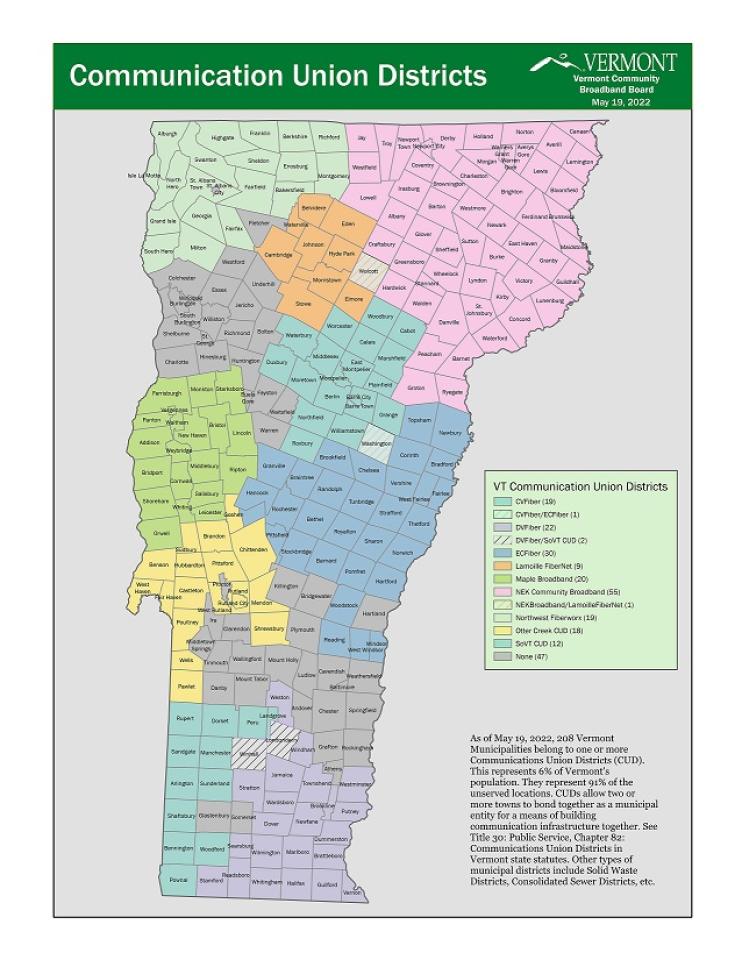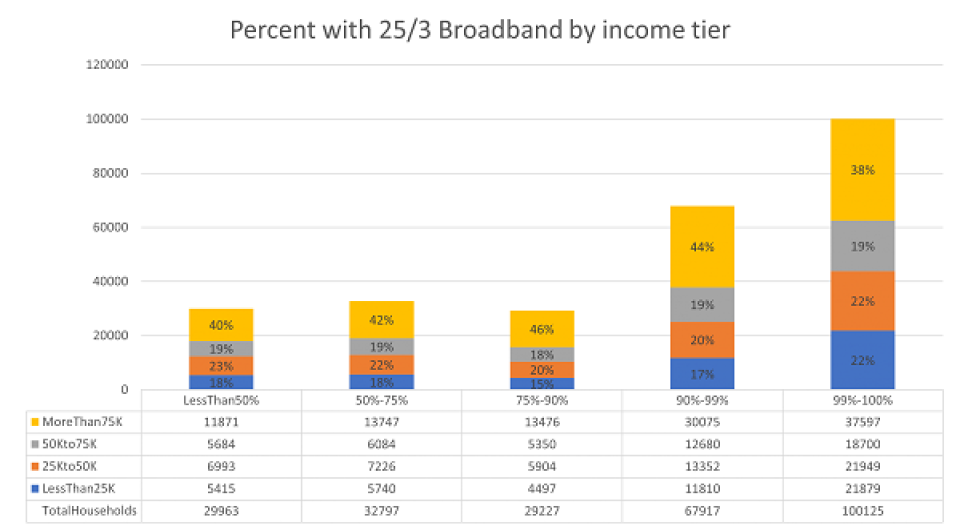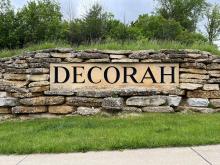
NEK Broadband has been awarded a $16 million grant by the Vermont Community Broadband Board (VCBB) to expand fiber access to 10 new Vermont communities. It’s among the earliest of what is likely to be a flurry of activity by the mostly-newly created Communications Union Districts - partnerships between rural cities and towns - which have formed over the last few years to solve the connectivity crisis for the tens of thousands of Vermonters who have been left behind by the current broadband marketplace.
A New Approach
Vermont’s broadband policy leaders say they plan to embrace CUDs as the primary avenue by which they hope to bridge the state’s long standing digital divide. A significant portion of the state’s $150 million broadband package will be funneled toward CUDs in a state where 85 percent of municipalities and 90 percent of underserved locations fall within a CUD.

The formation of most of the state’s CUDs is relatively new, though the most veteran example (EC Fiber) formed more than fifteen years ago. After years of persistence by EC Fiber, determined progress, and attitudinal changes in policy at the state level, CUDs now sit at the heart of the state’s rural broadband efforts.
Today, the municipally led CUDs can legally fund needed broadband expansions through debt, grants, and donations - but not taxes. Enter Vermont’s Act 71 Broadband Construction Grant program, which is doling out grants to the CUDs to deliver symmetrical speeds of 100 Megabits per second (Mbps) to underserved portions of the state.
NEK Among the First
NEK Broadband is one of nine municipal partnerships called Communications Union District (CUD), scattered across the state of Vermont. It represents 45 Vermont communities across Caledonia, Essex, Orleans and Lamoille Counties, in the northeast part of the state. See the full list of communities here.
NEK Broadband’s $16 million grant was the first awarded by the Act 71 grant program, and will fund the construction of 215 miles of fiber, expanding access to an estimated 1,500 households in Waterford, Concord, Kirby Burke, Brighton, East Haven, Lyndon, Newark, Wheelock, and Sutton, Vermont.
"This is a watershed moment for our CUD," NEK Broadband Governing Board Chair Evan Carlson said of the grant during a recent announcement ceremony in Bolton. "We are thrilled to now have the funds in hand to get construction underway.”
NEK Broadband also received a $6.9 million grant to support pre-construction work on 2,800 miles of additional fiber for residents and businesses in the broader Northeast Kingdom (NEK). The organization says it will provide residents with either symmetrical 50 Mbps fiber connections for $79.95 per month, or symmetrical 250 Mbps connections for $102.95 per month. The CUD also held an emergency Executive Committee meeting on June 9th to discuss “town ARPA proposals,” presumably to find ways to maximize the impact of the remaining Rescue Plan funding that Vermont communities in its coverage area have left.
As with so many new broadband expansion efforts, the catalyst for the project was forged by frustration with substandard broadband, something particularly pronounced during the telecommuting and home education boom of the Covid-19 crisis.
In addition to the $16 million dollar grant for NEK Broadband, the state also approved a $420,000 grant for Champlain Valley Telecom (WCVT). That second project will help upgrade 500 locations in Bolton still currently on dated DSL service.
"These two grants are the start of a major statewide broadband buildout effort unlike anything in Vermont since rural electrification and the highway system,” Vermont Governor Phil Scott said. “And just like those two historic advancements, these investments, and those coming over the summer, will be just as impactful and ensure all underserved Vermonters have access to broadband."
Toward Local Solutions

NEK Broadband is the first of the CUDs in the state to be awarded grant funding via the new program to dramatically boost access to fiber across the state. Grant conditions require that both of the recently awarded projects must be completed within two years.
Data from the Vermont Department of Public Service indicates that only 29 percent of state residents can currently obtain broadband at symmetrical speeds of 100 Mbps. Four percent of state residents have access to no broadband whatsoever, and sixteen percent of state residents can only obtain speeds of 4 Megabits per second (Mbps) downstream, 1 Mbps upstream.
The state indicates that affordability is also a significant barrier to widespread broadband adoption, with 68 percent of households earning less than $25,000 per year having access to only the FCC’s base definition of 25 Mbps downstream, 3 Mbps upstream broadband service.
Inline images of Vermont broadband access by households income and current CUD map via the Vermont Department of Public Service
Header image near Burke, Vermont by William Alexander from Pixabay







